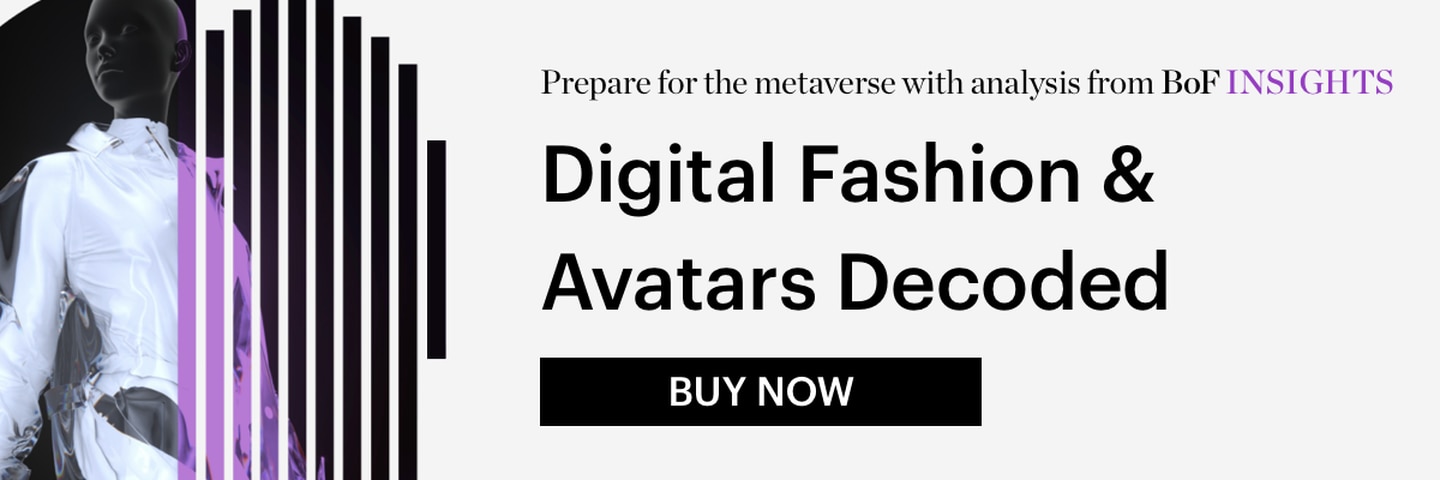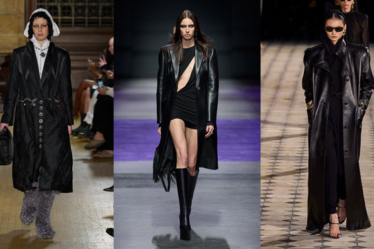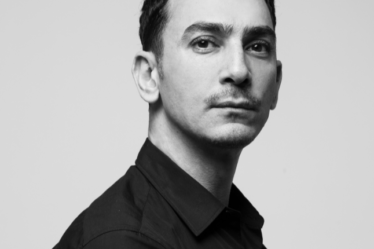
It can be easy for critics to dismiss digital fashion. The clothing in online virtual worlds can be clunky, crude and hampered by technical constraints, while augmented-reality garments that users might screenshot themselves wearing and post online can look fake or be glitchy if the lighting isn’t perfect. Sceptics may write off this sort of fashion as a cheap accessory for kids, and for brands that spend significant time and money crafting and propagating an image, it’s not always clear whether diving into digital goods presents more risk than reward.
Alice Delahunt isn’t fazed. The former fashion executive today announced the launch of her own web3 platform for digital fashion set to go live in 2023 called Syky. (It’s pronounced like Psyche, the goddess of the soul from classical mythology.)
Delahunt understands the fashion world as much as the digital one. Until March, she was the chief digital and content officer at Ralph Lauren. Prior to her four years there, she was Burberry’s global director of digital and social media, working alongside top leadership at the time including Angela Ahrendts and Christopher Bailey.
“Some people talk about digital fashion and when it’s coming and when will it be a thing. My perspective is it’s already here,” Delahunt said.
As an example, she pointed to Fortnite and a chart shared on Twitter recently by Matthew Ball, the influential author of “The Metaverse and How it Will Revolutionise Everything,” showing annual revenue for Fortnite’s maker, Epic Games, compared to top fashion brands. In 2018 and 2019, Epic generated $5.5 billion and $3.8 billion respectively, as revealed in a court battle with Apple last year. Practically all of it came from Fortnite, which is free to play and makes it money from sales of cosmetics skins that change a character’s appearance but don’t offer any in-game advantages. Prada, one of the fashion companies in the chart, did about $3.6 billion in 2019 sales by comparison. “Is Epic one of the world’s leading apparel companies?” Ball asked.
Fortnite skins include things we don’t traditionally think of as fashion, like entire bodies. (Ball also got Prada’s numbers slightly wrong in the chart because it appears he didn’t convert from Euros.) But the point remains that Fortnite players spend a lot on their appearances, and they’re not alone. Roblox, which averages more than 50 million daily active users, said more than half of users in a recent survey had spent $5 to $10 on a clothing item or accessory for their avatar. A quarter of users owned more than 50 items.
Brands continue trying to connect with these audiences, including Delahunt’s former employers: Ralph Lauren just announced a collaboration with Fortnite and Burberry teamed with Minecraft on physical and digital goods.
BoF spoke to Delahunt about how her time in the industry led to her move into digital fashion, whether established brands are at a disadvantage in the emerging virtual ecosystem, her new venture and Ralph Lauren himself picking Bitmoji designs.
What did you learn in your roles at Ralph Lauren and Burberry that brought you to where you are now?
Burberry was where I really got my hands on some of the first and most innovative work in terms of the intersection of digital and fashion. We were looking at runway shows and trying to understand how we could democratize them further. We were looking at garments and storytelling, added augmented reality, did virtual-reality installations and really worked at that intersection between the digital and fashion worlds.
When I got tapped for the Ralph Lauren role, there was obviously a huge job to do in terms of a very clear financial position as well as the elevation of our digital platforms globally. We launched on channels like TikTok, Roblox, [South Korea-based] Zepeto and [Snapchat’s avatar platform] Bitmoji. It was really at Bitmoji where I caught the digital fashion bug — digital fashion being that people are willing to express themselves in their digital identities through fashion. Within no time at all, tens of millions of Bitmojis were wearing Ralph Lauren with billions of try-ons of the product.
Then we moved to Zepeto, [the] largest digital fashion marketplace in APAC. There, I really understood that people are willing to pay for it. We sold over 150,000 products on the platform itself, and people spent real time in the experience, trying on product, socialising, gaming as well. We went to Roblox, launched a collection there for a small amount of time, and we saw that on the resale market, limited-edition items we had sold were going for three times their value. We also saw the launch of a lot of NFTs — collectables that were essentially on the blockchain — hitting luxury price points.
Although it was an incredibly big leap to jump from such an amazing job, I felt like we were at an intersection that, for my own personal life, you only come across once or twice. I think what we’re going to see in the next 10 years is going to radicalise the entire industry and I’m so excited for it.
How do you expect it will change fashion?
I was lucky and privileged enough to spend the early part of my career witnessing the impact social media had on brands and being at one of the brands that was at the beating heart of it. We saw this real democratisation of content and production. Before, the content industry looked incredibly different, specifically as it relates to fashion and editorial. We knew the big-name photographers who worked with the big-name brands. But then the iPhone came along and Instagram, and anyone who had the talent and the merit in terms of their craft gained a following and often were noticed by a lot of the big brands — and were competing with some of the really established photographers of that time. We saw an entire industry come off the back of it, which is now what we call the creator economy.
I think the creator economy is next about to disrupt design. In terms of where digital technology will go, as well as the platforms that will be born in the next 10 years, we are going to see the onboarding of a new generation of designers who use digital tools and technology to design digital-first as well as physical goods. Some of them are designing on Roblox as we speak, or are part of that Fortnite collectables economy.
Will these emerging creators have an advantage over big fashion brands just by being native to these spaces?
I think it’s going to be two twofold. We will absolutely see creators who will establish themselves as the major luxury brands of the future. I think, as well, a lot of the major luxury brands will adapt and partake in this economy too. We saw that with [the current internet] as well. One of the big followings that came is the D’Amelios from TikTok. But let’s not forget that Condé Nast has one of the largest followings on YouTube in the entire world. So I think it’s about adaptability. But I do believe there are going to be challengers coming in, and challengers in a market just make everybody better. We want to build a platform that’s going to sit at the intersection.
What can you tell me about your new company?
We’re building a blockchain-enabled platform for consumers as well as designers. It’s our ambition to exist in the digital, physical and augmented worlds where we hope to be the home of fashion design and the limitless possibilities of self-expression in new worlds.
Our company’s name is actually inspired by Psyche, the goddess of the soul in classical mythology, because we see a clear connection to how designers use fashion to express an intangible part of themselves. That exists in both the digital and physical world.
You say it will be blockchain-enabled. Will that be a necessity for digital fashion to take off? One of the limits right now is that if you buy an item in Roblox you can only use it in Roblox, and same with Fortnite and other games. They’re closed ecosystems. In theory, with NFTs you can publicly verify ownership of a digital item, so if there’s a way to enable these blockchain-based assets across virtual spaces, generally referred to as interoperability, you could carry your items with you wherever you go, making them that much more valuable. (Minecraft, however, has already said it will not allow NFTs.)
Every major head of all the major metaverse companies as they’re so-called, or platforms, has spoken about interoperability. I do believe that if we’re building with consumers at the [centre], interoperability will be the future, and we’re going to need spaces to build, and to hold and to transact for your own personal goods — in this case digital fashion. I don’t think it will make or break the entire industry, but I think in terms of blockchain from an enterprise perspective or a business perspective, it’s really important to know about it.
There’s been a lot of hype around NFTs — too much actually. NFTs are really about the ownership of the assets and how transparent it is on the blockchain. I think that’s going to be a really important part of our future, and I don’t think it’s something that’s going to go away. Nation states are readying themselves for it. The White House just published the comprehensive framework for responsible development of digital assets. In June, the EU struck an agreement in terms of how to govern the crypto asset market. And last week, even Japan’s prime minister called for web3 integration into public policy, including metaverse services.
I think consumers aren’t necessarily going to care if this is blockchain or not. I think they’re going to care about if they can own their goods, and that’s going to be really important, specifically in fashion.
What are the different types of digital-fashion products you think people will use?
My perspective is we’re going to be building three types of products. There’s going to be the digital products that exist entirely in the digital landscape. There’s going to be the physical products that perhaps just remain physical and are connected in some way, shape or form. And then there’s going to be the augmented products. I love what [Apple CEO] Tim Cook said about augmented reality and how consumers will use it and not understand life without it, as much as we could not understand life without the internet.
We’ve seen brands like Gucci and Balenciaga testing the waters of digital fashion, but the aesthetics can sometimes be an awkward fit. The Metaverse Fashion Week that took place in March was arguably not a great showcase for Dolce & Gabbana and Etro. Is there a place for luxury in this world?
My perspective is luxury does have a place in digital fashion. In fact, I think there’ll be an entire luxury digital fashion industry.
I don’t think it’s the luxury industry that will dictate if there’s a luxury market or not in digital fashion. I think it’s consumers, and I think they’re already telling us that they’re ready to buy at price points that are already luxury.
Bored Ape Yacht Club, if we’re going by price alone, is a luxury brand. Your initial access into it maybe wasn’t a luxury price point, but the market has dictated that to buy one of those today, you are hitting into well beyond luxury price points. You’re paying the price of a luxury car to get a Bored Ape at this stage. So I think dynamics are going to be different and consumers are going to be hugely important in understanding that. We will have to respond to it as well as contribute to it.
What I will say is the same narratives that we hear about digital fashion and luxury are actually a lot of the same narratives that we heard when the internet first came online and some brands opened up their first websites. Same thing that we heard as well with social media: should these brands be creating content and publishing it like this?
Are there any differences when you’re translating a brand into a digital space versus into physical garments or even something like a store environment?
It’s the same with social media or any platform. If you’re clear on the brand, what it stands for, the identifying codes, you’re just trying to understand how to translate that through different mediums, be it a TikTok video, a Snapchat augmented-reality filter, YouTube long-form content or a piece of digital fashion on Roblox. It needs to feel true and right to the brand that it was created for, and I find that the very best of the luxury houses are brilliant at doing that.
Having worked with platforms in Asia as well as the US and Europe, do you see any differences in how consumers in these regions are responding to or embracing digital fashion?
At a fundamental human level, they’re very much the same in that we all have a need to express ourselves and often we do that through fashion. In terms of the technology environment and the way that that has been built, I was really lucky and worked with a lot of the Asian social platforms — WeChat, Line, Kakao — and watching social commerce take off in that market was incredibly inspiring. In terms of where this will go for web3, a lot is still to be defined. I mentioned, for example, the different governmental responses to it. I think how this plays out in terms of platforms, we’re yet to see.
I have to ask since the news just came out. Ralph Lauren just announced a collaboration with Fortnite. Any perspective you’d care to share on that?
I was lucky enough to be there at the early stages of it and watching what the team has done and the way they’ve rolled it out is so inspiring. Ralph Lauren is, as a man and a brand, one of the best entrepreneurs of the last 50 years, and the way he has adopted digital fashion has been phenomenal. You know, it was Ralph picking the Bitmoji designs, Roblox designs and Zepeto designs. Ralph has a clear perspective on this.
So Ralph himself was actually picking the Bitmoji designs?
Ralph was giving feedback to the design team and guiding us in terms of all digital fashion, digital environments and interactions. Ralph completely understood the space. I was lucky enough to spend time with him weekly on web3, cryptocurrencies and the metaverse. The conversations I managed to have with him will stay with me for the rest of my life. I would say the same about [CEO] Patrice Louvet, who inherently understands this space. I’m excited to see all the rest of the things they do.
This interview has been edited and condensed for clarity.



